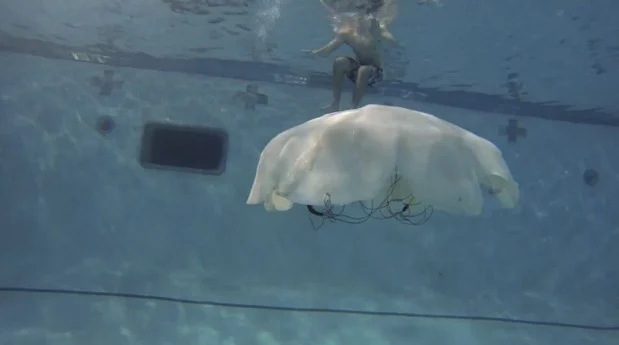There are a huge and varied number of uses for robots in the military, such as BigDog which is designed to carry food, gear, and other items for soldiers on the battlefield.
Additional robotic missions include reconnaissance, whether in the skies or open ocean.

Indeed, researchers from Virginia Tech have managed to create an eight-armed autonomous robot called Cryo – a robot designed to mimic the movement of jellyfish using a flexible silicone hat.
The robotic jellyfish – approximately the size of a human hand – requires batteries to operate and researchers are hoping the bot will ultimately be capable of mimicking the efficient propulsion capabilities of real-world jellyfish to extend its runtime. Using the efficient jellyfish-like method of propulsion, scientists believe the robot will be capable of running for months on a single charge instead of hours.
“A larger vehicle will allow for more payload, longer duration and longer range of operation,” said Alex Villanueva of St-Jacques, New-Brunswick, Canada, and a doctoral student in mechanical engineering.
“Biological and engineering results show that larger vehicles have a lower cost of transport, which is a metric used to determine how much energy is spent for traveling.”
Of course, the prototype robots can also be modded for use in monitoring ocean currents, pollution and helping to clean oil spills in the event of an accident.
The underwater robot looks more like a floating mushroom than a jellyfish, at least to me. However, the way it moves is very similar to a real jellyfish. Cyro’s skin is comprised of a thick layer of silicone, squishy in one’s hand. It mimics the sleek jellyfish skin and is placed over a bowl-shaped device containing the electronic guts of the robot. When moving, the skin floats and moves with the robot, looking weirdly alive.
“Cyro showed its ability to swim autonomously while maintaining a similar physical appearance and kinematics as the natural species,” researchers explained, adding that the robot is simultaneously able to collect, store, analyze, and communicate sensory data.
“This autonomous operation in shallow water conditions is already a big step towards demonstrating the use of these creatures.”






